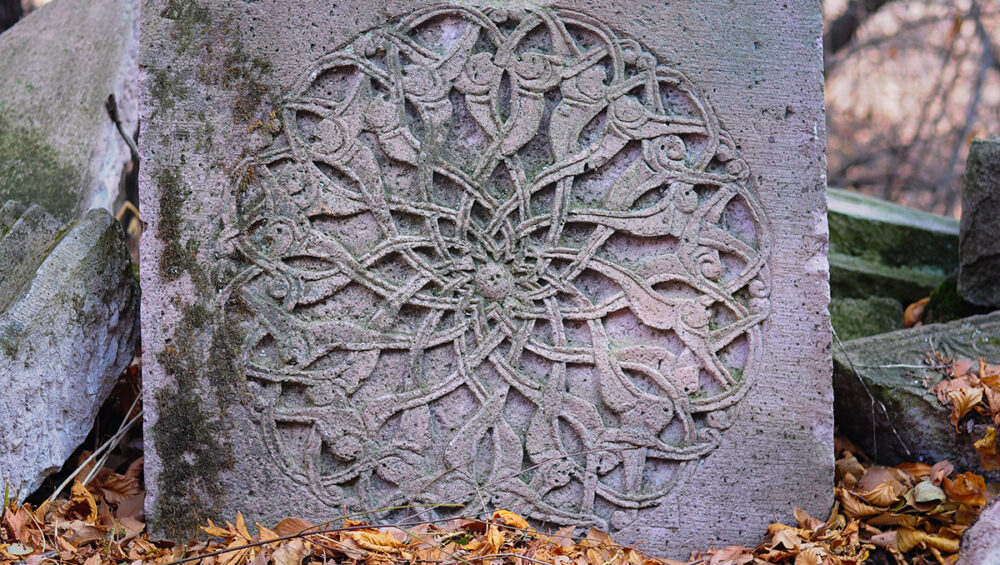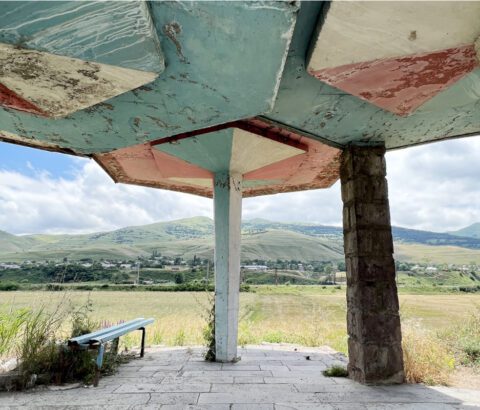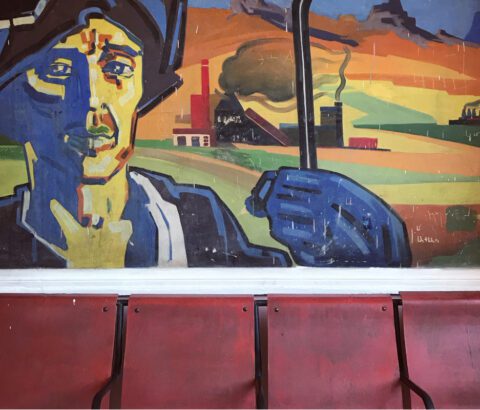In the north of Armenia, in the heart of the province of Lori, as if a crawling dragon, stretches the mysterious Debed canyon. Its sheer cliffs stand tall as guardians protecting the centuries-old monasteries, the hard-working people, the history and old traditions, and the haunting local tales and legends, each a precious gem in its own. Debed canyon is breathing with captivating folk stories, the fairy tales written by Hovhannes Tumanyan echo through the gorge as if an accompaniment to the symphony created by the rapids streams of Debed river. In a way, these legends are a unique reflection of the strong bond between people and the canyon. They also shed light on the origin of some of the most notable sites in the area.
The Sage and the Dragon
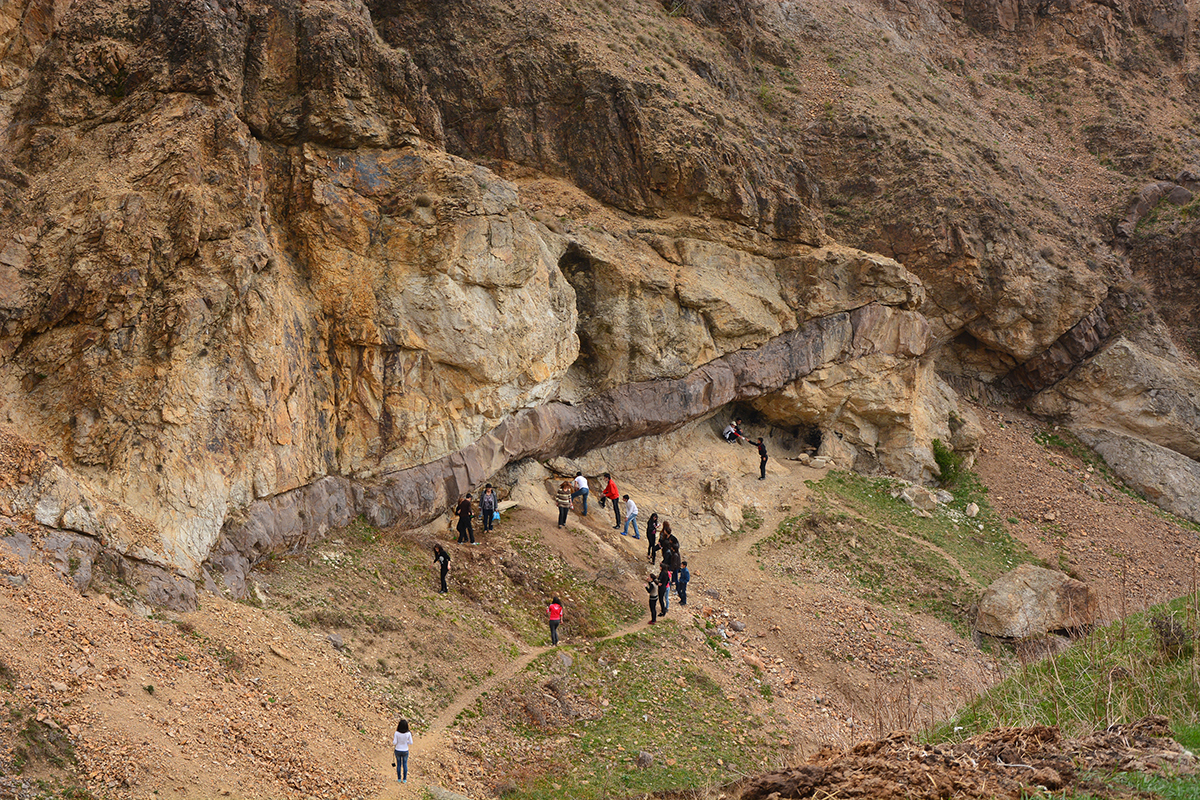

Once upon a time, a sage lived in the vicinity of the village of Ardvi. He had settled down on the right slope of a small gorge and had 7 disciples who studied at the school he had founded. A terrifying huge dragon appeared on the opposite side of the gorge one day, causing trouble to villagers. When the sage learned that a woman was immediately turned into stone upon seeing the dragon on her way to a spring, he asked one of his disciples to go and find out what the creature was. But the young man did not return. One by one, his remaining disciples went to fight the dragon but never came back. Confused, the sage decided to go look for his followers and soon he, too, faced the dragon. “Turn into stone and may a healing spring flow from your heart,” exclaimed the sage, hitting the dragon with his staff. The dragon immediately turned into stone, and a stream flowed from its heart. The spring is believed to have healing properties. A popular story has it that once a young boy was bitten by a venomous snake while wandering in the area. The situation seemed hopeless, but the boy washed the wound with the water from the spring, and it healed.
Today, the site is known as “Odzi Port” (“Dragon Belly”). This natural monument is located about 10 km south of Odzun, in the village of Ardvi, near the 13th-century monastery of Saint Hovhannes that houses the tomb of Catholicos St John the Philosopher.
The Legend of Haghpat and Sanahin
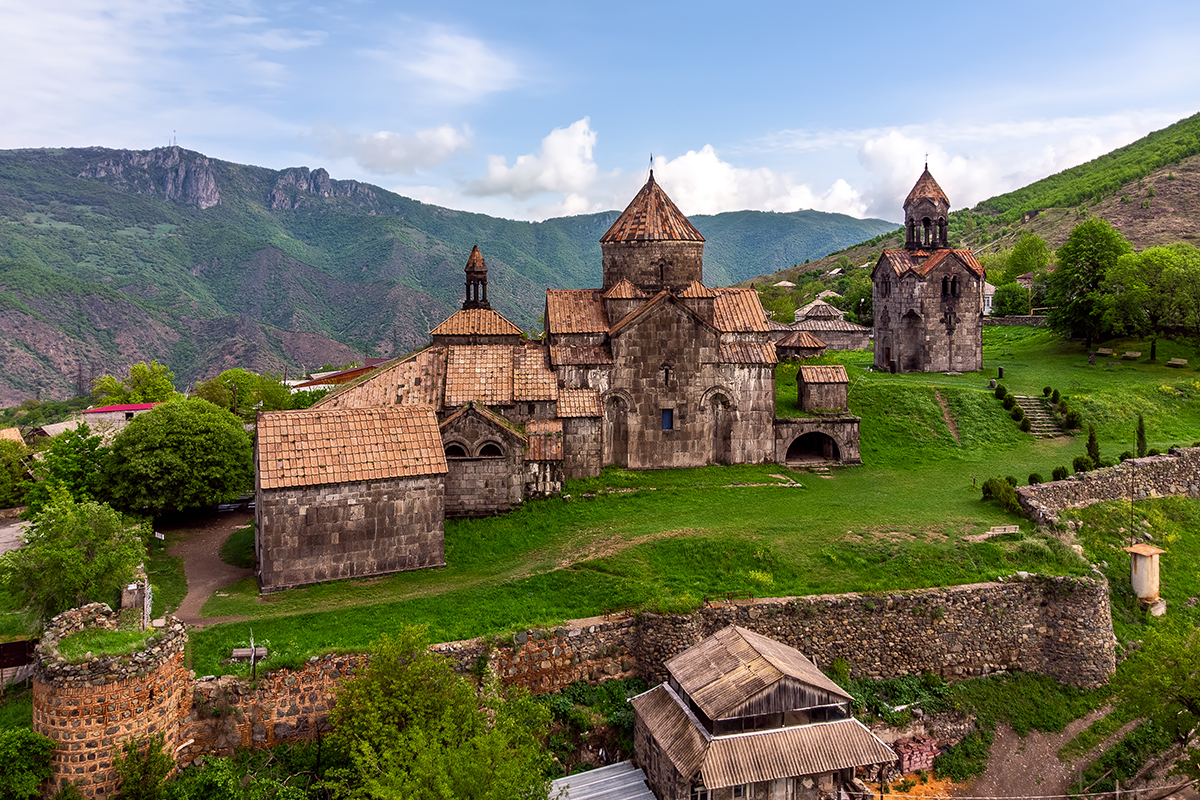

Described as outstanding examples of Armenian medieval architecture that represent a unique fusion of traditional architecture of the region and the ecclesiastical architecture of the Byzantine Empire, the monasteries of Haghpat and Sanahin, both UNESCO World Heritage sites, not only share common historical past, but also a legend related to their foundation.
The lore has it that Haghpat and Sanahin owe their names to a quarrel between a father and son during the construction of Sanahin monastery. One of the princes of Sanahin invited a renowned master to build a monastery. The master had brought his son with him, but as the construction of the monastery commenced, a conflict arose between them. The son abandoned his father and left Sanahin. On the way, he crossed paths with another prince who hired him to build another monastery. As he carried on with the construction, his father’s apprentices noticed the walls rising on the opposite mountain. The old master decided to visit the construction site. Upon seeing his son, the old master asked, “What are you building?” “The wall of victory,” the son answered. His father examined the walls carefully and proclaimed: “Akh pat” (strong wall). Thus, the monastery became known as Haghpat. He then pointed at the church he was building and said, “But remember that that one is older than this.” This phrase in Armenian is “Sa nranic hin eh.” Sa-na-hin. Thus, the monastery became known as Sanahin.
The Legend of the Crow and Snake
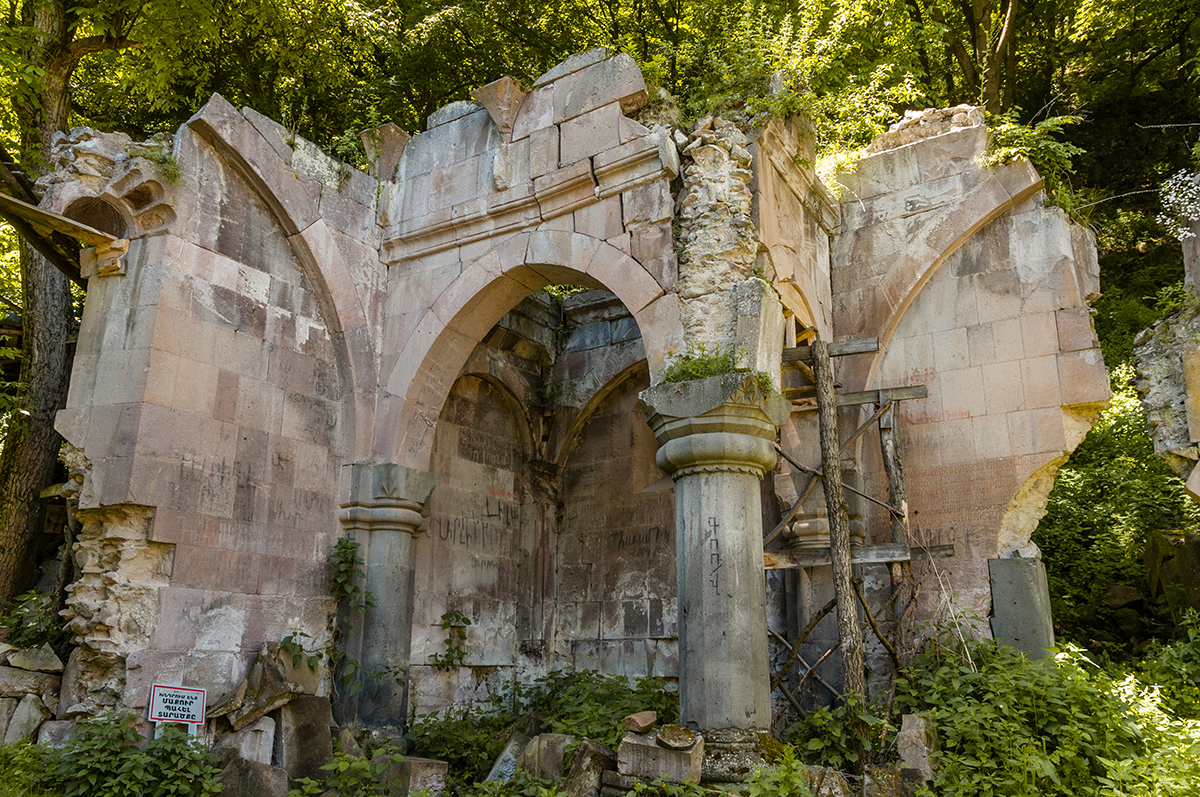

Hidden in the thick forests on the left slope of Marts river gorge, about a 2-km walking distance from the village of Dsegh, the Bardzrakash St. Gregory monastery is truly a treasure of Armenian medieval architecture. Built in the 10th-13th centuries, this monastic complex, dedicated to St. Gregory the Illuminator, the patron saint and first Catholicos of the Armenian Apostolic Church, was a major spiritual and educational center in northern Armenia in the Middle Ages, where clergymen were engaged in scientific work.
A legend has it that one day, during the construction of the monastery, a venomous snake crawled into the cauldron, in which a meal was being cooked for the construction workers. It happened that a crow was flying above the site at that particular moment. Upon noticing the snake, the crow began to fly in circles above the cauldron in an attempt to warn the people. But no one could understand the reason for the bird’s strange behaviour. When they finally sat around to enjoy their meal, the crow threw itself into the hot cauldron. Disgusted, people emptied the cauldron and only then, upon seeing the snake, did they realize that the bird had saved their lives. Humbled by the crow’s sacrifice, they buried it and built a chapel above the grave.
The Legend of the Greek Prince
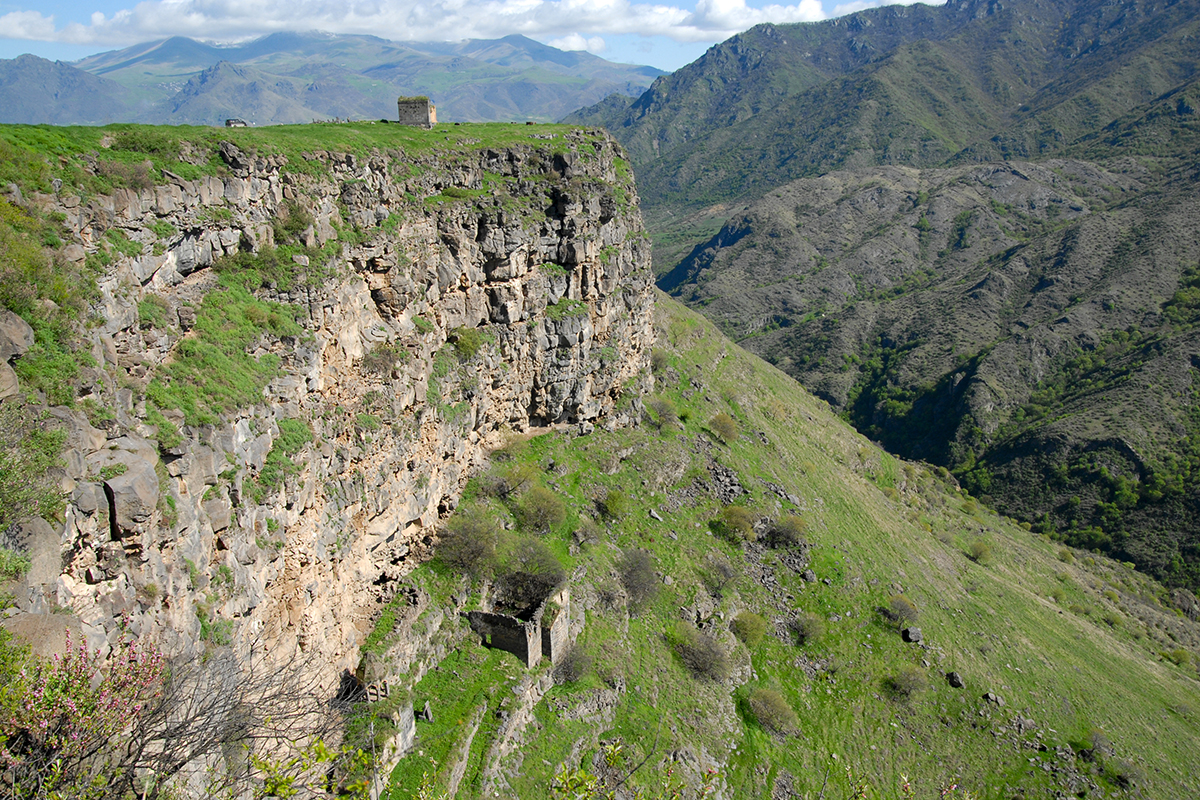

Located about 3 km southeast of the village of Odzun, the monastery of Horomayr is a unique complex consisting of two parts – the lower and the upper. Known as the “Monastery in the gorge”, the lower part is situated just below the sheer cliffs on the left slope of Debed canyon. The upper part, called the “Monastery on the edge of the canyon”, sits on the edge of the plateau above.
According to a popular legend, the monastery owes its name to a Greek prince named Vasid who is claimed to be the founder of Horomayr. It is said that after a war between Armenians and Greeks, the Catholicos John the Philosopher of Odzun stood in front of the representatives of the two nations and threw a holy relic, a piece of the True Cross, into a boiling cauldron, saying, “His faith is the true one who can put his hand into the boiling water and take out the relic!” The Greek patriarch approached the cauldron first and tried to get the relic but failed, burning his hand. John the Philosopher then crossed himself, submerged his hand into the cauldron and took out the relic. Upon witnessing this miracle, a Greek prince named Vasid decided to convert to the faith of the Armenian church and settle down in the area. For many years, he lived as a hermit in the caves on the slope of the Debed canyon, and founded the first church of the site. Thus, the monastery became known as Horomayr, from the words “horom” (referring to people of Greek/Byzantine origin) and “ayr” (cave).
John the Philosopher and the Arab Caliph
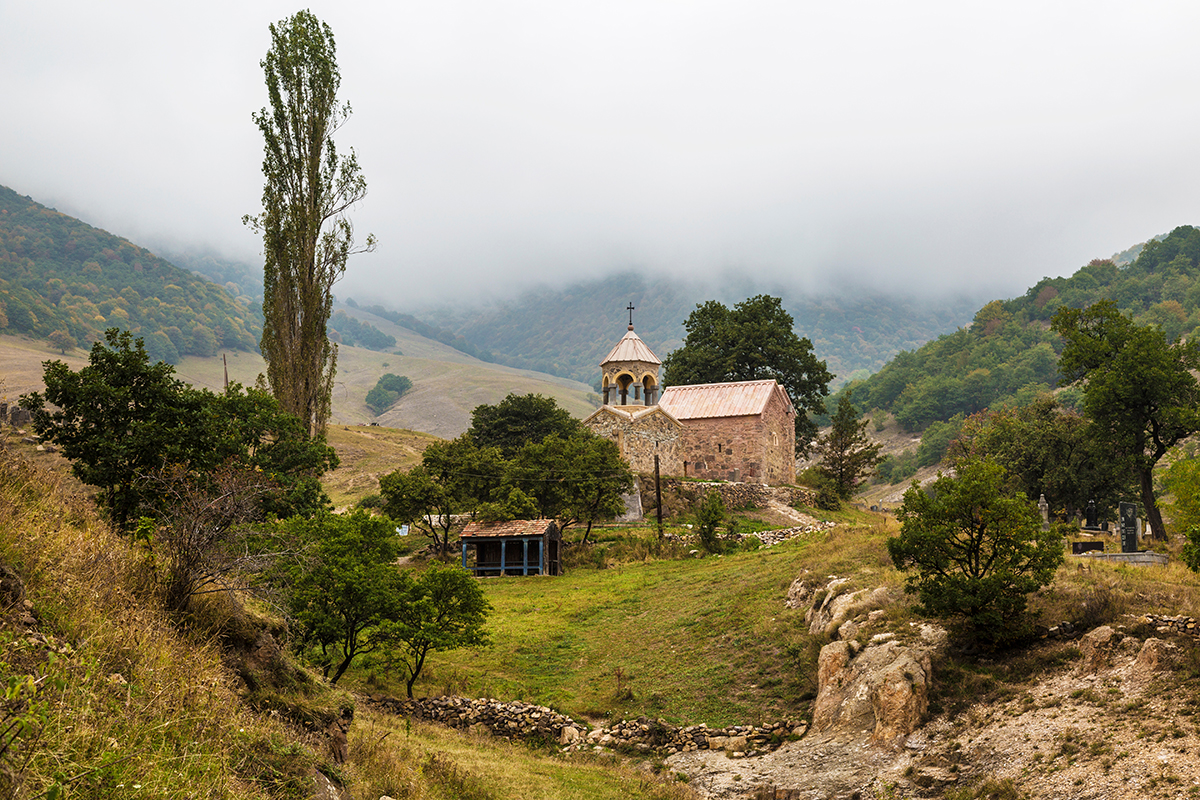

There are many legends and stories about the miracles performed by Catholicos John the Philosopher (Hovhan Odznetsi) in his lifetime. The fame of his activities and deeds reached far beyond the Armenian Kingdom. It is said that upon hearing of John the Philosopher’s beauty and glory, the Arab caliph was so intrigued that he invited the catholicos to Damascus in order to meet him in person.
In Damascus, the head of the Armenian church presented himself to the caliph dressed in luxurious, shiny clothing, holding a gold-plated staff in his hand. The caliph was impressed by the look of John the Philosopher, and when the official ceremony was over, he offered the catholicos a seat and started a conversation about foppery. The caliph was known as a person who enjoyed simplicity and detested the royal life of luxury. Addressing the catholicos, he said he heard that the prophet of the Christians, Jesus, was a humble and decent man who was far from luxury, and that the Christian leaders enjoyed poverty above anything else. How is it possible then that John the Philosopher, who is their follower, presents himself in such spendor, the caliph asked.
To this, the Armenian catholicos answered that while the words of caliph are true, the early fathers of Christianity performed miracles and did not need luxurious items to impose their power on people, but since he lacked such powers, he had to pay attention to external splendor. If the caliph wore sackcloth, would anyone even guess who he really was? Upon saying this, John the Philosopher asked the caliph to order everyone out of the audience hall, and when they were left alone, he took off his rich clothes, revealing a sackcloth made of goat wool underneath.
The Arab caliph was humbled and deeply moved by the virtue of the Armenian catholicos. He awarded John the Philosopher with precious gifts and announced that he would comply with any of his requests. The catholicos addressed the caliph with three requests: to end the persecution of Christians and the forced conversion to Islam; to secure safety for Chrsitian churches and priests; to allow Christians to practice their religion freely wherever they are. Not only did the caliph comply with the requests, but he also gifted John the Philosopher with gold and silver, and ordered an army to escort him back to Armenia and guard him on the way.
The Legend of Odzun
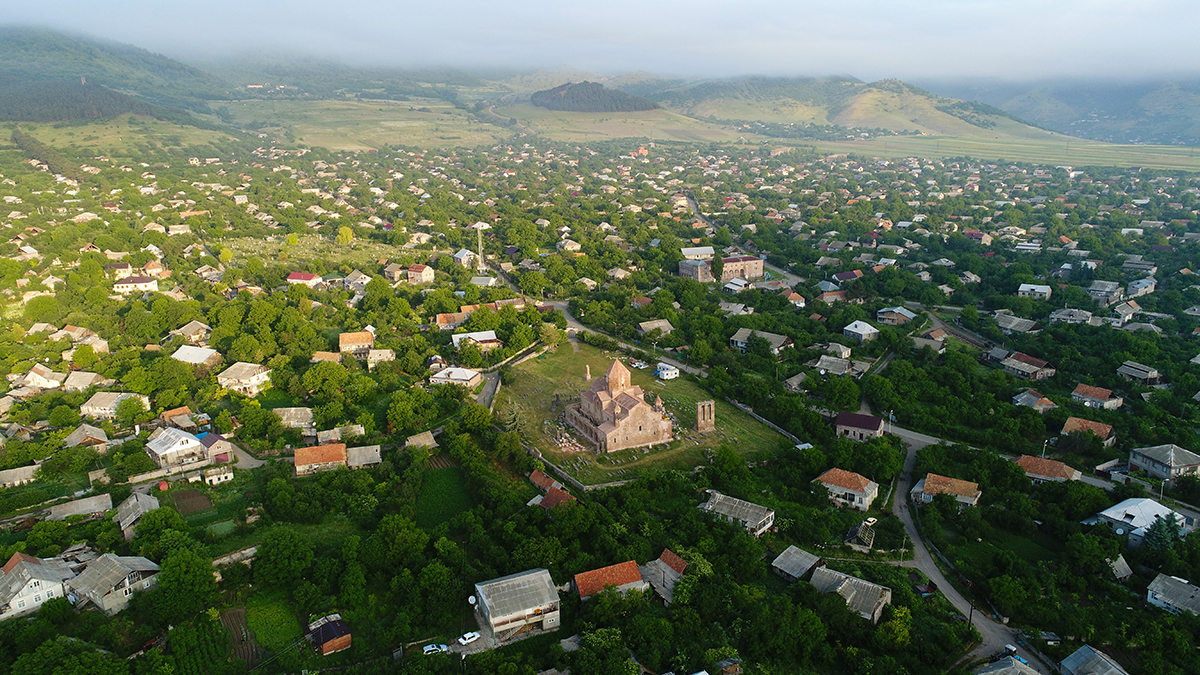

The village of Odzun is one the oldest settlements in the Debed canyon and one of the largest villages in Armenia. Traced to the Gugark province of the historic Kingdom of Armenia, the history of Odzun is intertwined with the history of Christianity in Armenia from its early days. Odzun was the birthplace of Catholicos John the Philosopher (Hovhan Odznetsi), it is home to a unique basilica church, the history of which dates back to as early as the 4th century. And it is believed that the village owes its name to one of the Twelve Apostles of Jesus Christ.
Odzun derives its name from the Armenian word “otsel”, which means “to ordain.” The Christian tradition has it that in the 1st century Thomas the Apostle passed through the area of the present-day Odzun on his way to India. While here, the disciple of Christ ordained a number of priests and bishops. Thus, the name of the village. It is believed that before his departure to India, Thomas the Apostle had buried Christ’s swaddling clothes in the area, above which a small church was built. Later, in the 4th century, King Tiridates the Great and Gregory the Illuminator built a basilica on the site, which was gradually enlarged in the coming centuries, becoming what we know today as the Basilica of Odzun.

